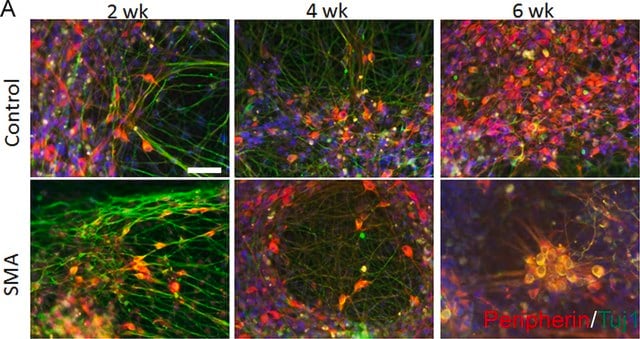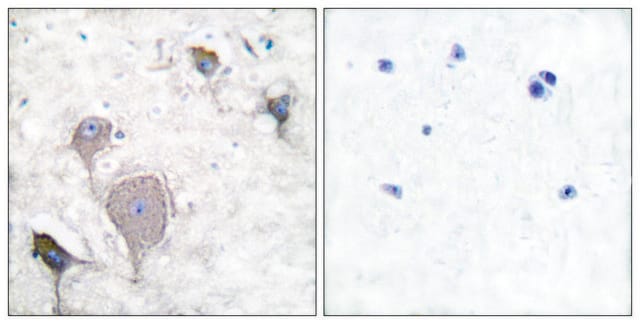MAB1527
Anti-Peripherin Antibody, clone 8G2
culture supernatant, clone 8G2, Chemicon®
Sinonimo/i:
Anti-NEF4, Anti-PRPH1
About This Item
Prodotti consigliati
Origine biologica
mouse
Livello qualitativo
100
300
Forma dell’anticorpo
culture supernatant
Tipo di anticorpo
primary antibodies
Clone
8G2, monoclonal
Reattività contro le specie
pig, rat, bovine, human, mouse
Produttore/marchio commerciale
Chemicon®
tecniche
immunocytochemistry: suitable
immunohistochemistry: suitable
western blot: suitable
Isotipo
IgG
Compatibilità
not suitable for immunohistochemistry (Paraffin)
N° accesso NCBI
N° accesso UniProt
Condizioni di spedizione
dry ice
modifica post-traduzionali bersaglio
unmodified
Informazioni sul gene
human ... PRPH2(5961)
Descrizione generale
Specificità
Immunogeno
Applicazioni
Immunohistochemisty: light PFA fixation is necessary as 8G2 is sensitive to heavy formalin fixation. Antigen recovery is enhanced with 0.1% triton in the block only. 1:25-1:200
Immunoblotting: The antibody is clean and specific for the expected 57kDa band on Western blots.
Optimal working dilutions must be determined by end user.
Neuroscience
Sensory & PNS
Neuronal & Glial Markers
Descrizione del bersaglio
Stato fisico
Stoccaggio e stabilità
Risultati analitici
Rat sensory neurons, rat spinal cord homogenate and peripheral nerve homogenate
Altre note
Note legali
Esclusione di responsabilità
Not finding the right product?
Try our Motore di ricerca dei prodotti.
Raccomandato
Codice della classe di stoccaggio
11 - Combustible Solids
Classe di pericolosità dell'acqua (WGK)
WGK 3
Punto d’infiammabilità (°F)
Not applicable
Punto d’infiammabilità (°C)
Not applicable
Certificati d'analisi (COA)
Cerca il Certificati d'analisi (COA) digitando il numero di lotto/batch corrispondente. I numeri di lotto o di batch sono stampati sull'etichetta dei prodotti dopo la parola ‘Lotto’ o ‘Batch’.
Possiedi già questo prodotto?
I documenti relativi ai prodotti acquistati recentemente sono disponibili nell’Archivio dei documenti.
Il team dei nostri ricercatori vanta grande esperienza in tutte le aree della ricerca quali Life Science, scienza dei materiali, sintesi chimica, cromatografia, discipline analitiche, ecc..
Contatta l'Assistenza Tecnica.







